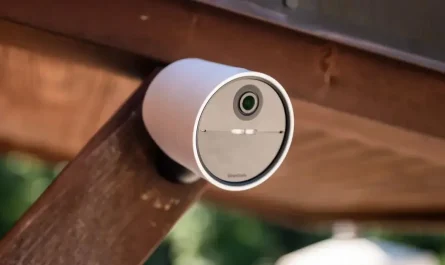10 Roof Problems That Could Cost You Thousands (And How to Prevent Them)
Plumbing leaks may initially appear to be a small problem, but believe me when I say that they may soon become a significant one. Whether it’s a slow, invisible pipe leak or a dripping faucet, the damage they create over time can be costly and result in water damage, mold development, and higher utility bills. Even the smallest break can cause major problems if overlooked, despite your belief that a minor leak is not a significant concern.
This is about avoiding the larger problems later on, not simply about repairing the leak. This post will discuss the most typical plumbing leaks that may occur in your house and how to address them before they become serious. Together, let’s address those leaks to keep your house safe, dry, and reasonably priced.
1. Fix Leaky Faucets with Simple Tools
One of the most frequent plumbing issues you’ll run into at home is a leaking faucet. Why are these leaks occurring?worn-out washers. Washers deteriorate with time, which results in improper faucet sealing and that inconvenient drip-drip sound you can’t ignore. But don’t worry, you can fix it yourself with a few simple tools.
Here’s a detailed instruction to replacing your faucet’s washers, O-rings, and seals:
-
Turn off the water supply
: Start by shutting off the water supply to the faucet to avoid any mess or water waste. -
Disassemble the faucet
: Use a wrench or pliers to remove the handle and the valve stem. This may require unscrewing some parts, depending on the type of faucet. -
Inspect the parts
: Check the washer, O-ring, and seal for signs of wear. These are typically the culprits behind the leak. -
Replace the parts
: Purchase the correct replacement parts (you can find these in any hardware store) and install them, making sure everything fits snugly. -
Reassemble the faucet
: Put the faucet back together and turn the water supply back on. Test the faucet to make sure the leak is gone.
Why This Is Important for You: This solution will help you avoid wasting water in addition to removing the annoying drip-drip noise. Check out our article on 10 Ways to Winter-Proof Your Home Without Hiring a Professional for advice on how to protect your plumbing and faucets from freezing temperatures so that leaks won’t become a problem during the colder months. Your water costs can rise due to the hundreds of gallons of water that leaky faucets use annually. You will save time and money by resolving this problem on your own.
2. Use Plumber s Tape to Temporarily Seal Pipe Leaks
Can’t call a professional straight immediately because of a little pipe leak? Teflon tape, sometimes referred to as plumber’s tape, can help you. It’s a great way to stop minor pipe leaks until you can get a permanent solution in place.
Here’s how to seal the leak with plumber’s tape:
-
Identify the leak
: Locate the leaking area of the pipe. You ll likely find small drips or wet spots around the pipe. -
Clean the area
: Before applying plumber s tape, clean the area around the leak to ensure the tape sticks well. -
Wrap the tape around the leak
: Start wrapping the plumber s tape around the pipe, overlapping slightly as you go. Apply several layers to ensure a tight seal. -
Check for leaks
: Once the tape is in place, turn the water supply back on and check if the leak is sealed.
How Much Time Will This Fix Take?Plumber’s tape is a temporary solution. Depending on the extent of the leak and the water pressure, it may continue for a few hours or days. Although it’s perfect for emergencies, you should contact a qualified plumber as soon as possible to get the pipe fixed correctly.
Why This Matters to You: This is a simple, inexpensive solution that stops additional harm. Plumber’s tape is your best friend if you have a tiny pipe leak and need some time to determine the best long-term remedy. While you wait for a professional repair, you are preventing water damage to your floor or walls.
3. Seal Leaks with Epoxy Putty for Pipe Cracks
Pipe cracks can occasionally occur and, if addressed, can result in significant leaks. However, it’s not always necessary to replace the entire pipe.Epoxy putty can be a lifesaver in an emergency and is an excellent, reasonably priced method of caulking minor pipe cracks.
Here’s how to repair pipe cracks with epoxy putty:
-
Turn off the water supply
: Always shut off the water supply to avoid flooding the area while you work. -
Clean the cracked area
: Use a clean rag to wipe away any dirt, moisture, or rust around the crack. -
Mix the epoxy
: Follow the manufacturer s instructions to mix the epoxy putty. Typically, it comes in two parts that you knead together until it s a uniform color. -
Apply the putty
: Press the putty into the crack and smooth it out, making sure it covers the crack completely. Hold it in place for a few minutes to ensure a firm seal. -
Allow the putty to harden
: Let the epoxy cure for the recommended time (usually a few hours) before turning the water back on.
The best time to use epoxy putty is for minor cracks in PVC or metal pipes. It’s a fast and long-lasting solution for small leaks, but you should get in touch with an expert if the crack is too big or you’re not sure the pipe is still intact.
Epoxy putty is an excellent short-term fix that is reasonably priced and long-lasting. Without having to worry about water damage, it allows you ample time to plan for a suitable pipe repair or to determine your next course of action. Additionally, it spares you the expense of hiring a plumber to fix a little break.
For additional professional advice on repairing leaks and enhancing your plumbing system, see this useful guide from This Old House.
You can save a lot of money and trouble by using these techniques. Have you ever attempted to repair a leak on your own?I’d love to know how you’ve handled your plumbing problems, so please share your experience or ask any questions in the comments section below!
4. Replace Damaged Faucet Cartridges to Prevent Leaks
The unsung heroes of a smooth water flow in your bathroom or kitchen are faucet cartridges. They may deteriorate with time, particularly in older faucets, resulting in persistent leaks or inadequate water flow. The good news?One easy and efficient approach to get your faucet back in working order without hiring a plumber is to replace a damaged faucet cartridge.
Here’s how to spot a bad cartridge and swap it out:
-
How to identify a faulty faucet cartridge
: If your faucet is leaking even when it s turned off or the water pressure is weak or inconsistent, the cartridge might be the culprit. You ll notice water pooling around the base of the faucet handle or continuous dripping. -
Step-by-step guide to replacing faucet cartridges
:-
-
Turn off the water supply
: Before you do anything, make sure you turn off the water supply to the faucet. -
Remove the handle
: Unscrew the faucet handle using a wrench or screwdriver to access the cartridge. -
Extract the old cartridge
: Depending on your faucet type, you may need a special tool to pull the cartridge out. Use pliers if necessary. -
Install the new cartridge
: Place the new cartridge into the faucet assembly. Be sure it s seated properly. -
Reassemble the faucet
: Tighten everything back in place, and turn the water supply back on. Test the faucet to ensure it s functioning correctly.
-
-
Why This Is Important for You: By replacing the cartridge, you can halt the ongoing leaks that waste water, which benefits the environment and your water cost. Additionally, it enhances water flow, bringing the pressure back to normal and halting additional deterioration of the faucet’s parts.
5. Fix Leaking Toilets with a Wax Ring Replacement
A worn-out wax ring is frequently the source of toilet leaks, which may be rather insidious. This rubber ring forms a watertight barrier between the drain pipe and the toilet foundation. However, it may degrade over time and result in leaks around the toilet’s base. Let’s examine how to swap it out and halt the leaks.
Here’s how to find out whether your toilet is leaking and how to replace the wax ring:
-
Guide on replacing a wax ring under the toilet
:-
-
Turn off the water supply
: Start by shutting off the water supply to the toilet and draining the tank. -
Remove the toilet
: Carefully remove the bolts holding the toilet to the floor. You may need a helper to lift the toilet off the base. -
Replace the wax ring
: Once the toilet is lifted, scrape off the old wax ring and place a new one onto the flange. -
Reinstall the toilet
: Carefully place the toilet back onto the flange, making sure it s level and the bolts are tightened.
-
-
-
Common signs of a leaking toilet
:-
- Water pooling around the base of the toilet
- A musty smell from the bathroom (a sign of mold or water damage)
- Constant dampness on the bathroom floor around the toilet
-
-
- Water pooling around the base of the toilet
- A musty smell from the bathroom (a sign of mold or water damage)
- Constant dampness on the bathroom floor around the toilet
- Water pooling around the base of the toilet
- A musty smell from the bathroom (a sign of mold or water damage)
- Constant dampness on the bathroom floor around the toilet
Why You Should Care About This: By repairing the wax ring, the source of a leaking toilet, you may stop water from leaking into your floors, which could cause significant water damage. You may avoid costly repairs by protecting your bathroom’s floor and foundation with a properly sealed toilet.
6. Tighten Loose Connections Under the Sink
Although it’s simple to ignore, slow, continuous leaks are frequently caused by loose connections beneath your sink. Although these leaks are usually minor, if left unchecked, they might pose serious problems. Thankfully, there is a simple and quick solution.
To halt the leaks, use these steps to tighten the connections:
-
How loose connections under sinks can cause leaks
:-
-
Over time, water pressure and regular use can loosen the nuts and bolts connecting your plumbing under the sink. This leads to
drips
or a steady stream of water that you might not notice until the damage starts to show.
-
Over time, water pressure and regular use can loosen the nuts and bolts connecting your plumbing under the sink. This leads to
-
-
Tips on tightening the connections and checking for leaks
:-
-
Turn off the water supply
: Always start by turning off the water supply to avoid flooding. -
Inspect the connections
: Check the pipes under the sink for any loose connections or signs of wear. -
Tighten the connections
: Use a wrench or pliers to tighten the nuts around the pipe connections, ensuring a snug fit. -
Test for leaks
: Once everything is tight, turn the water back on and check for leaks by running water through the sink.
-
-
-
-
Over time, water pressure and regular use can loosen the nuts and bolts connecting your plumbing under the sink. This leads to
drips
or a steady stream of water that you might not notice until the damage starts to show.
-
Over time, water pressure and regular use can loosen the nuts and bolts connecting your plumbing under the sink. This leads to
-
Over time, water pressure and regular use can loosen the nuts and bolts connecting your plumbing under the sink. This leads to
drips
or a steady stream of water that you might not notice until the damage starts to show.
Why This Matters to You: Water damage that is frequently concealed behind cabinets can be avoided by tightening weak connections. It’s a simple, sometimes disregarded remedy that can prevent more serious plumbing issues down the road. Visit The Family Handyman for other useful home improvement advice.
These fixes are simple yet impactful. Have there been any plumbing problems near your toilet or sink? What DIY fixes worked for you?I’d love to hear about your experience, so please leave any questions or comments in the space provided below!
7. Use Compression Fittings to Repair Leaks in Copper Pipes
Copper pipes are reliable, but over time, they can develop leaks, especially at the joints. Instead of replacing an entire section of pipe,compression fittingsprovide an excellent solution to seal leaks without the need for soldering. This method is fast, effective, and doesn t require professional experience, making it perfect for DIY enthusiasts.
Here s how you can use compression fittings to fix leaks in copper pipes:
-
When to use compression fittings
:-
- Compression fittings are ideal for small to medium leaks, especially where the pipe is damaged but the section is still usable.
- They are perfect when you need a fast repair without removing the pipe entirely.
-
-
How to install compression fittings correctly
:-
-
Turn off the water supply
: Always start by shutting off the water supply to the area you re working on. -
Cut the pipe
: If the pipe is damaged, cut out the affected section with a pipe cutter. -
Install the compression fitting
: Slide the compression nut and ring onto the pipe. Then, insert the pipe into the fitting and tighten the nut. Make sure the seal is tight and secure. -
Test for leaks
: Once the compression fitting is in place, turn the water back on and check for leaks.
-
-
-
- Compression fittings are ideal for small to medium leaks, especially where the pipe is damaged but the section is still usable.
- They are perfect when you need a fast repair without removing the pipe entirely.
- Compression fittings are ideal for small to medium leaks, especially where the pipe is damaged but the section is still usable.
- They are perfect when you need a fast repair without removing the pipe entirely.
Why This is Important for You: Compression fittings are aquick, reliable fixfor copper pipe leaks. You don t need to worry about soldering, and you ll save time and money on more expensive professional repairs. Plus, they create a strong seal that can hold up for years.
8. Stop Leaks in Water Supply Lines with a Pipe Clamp
A leaking water supply line can cause havoc, but if you need atemporary fixbefore you can replace the damaged pipe, apipe clampcan help seal the leak. This method is simple, inexpensive, and will help you avoid serious water damage until you can get a permanent solution.
Here s how to use a pipe clamp:
-
How to use a pipe clamp to temporarily seal a leaking water supply line
:-
-
Locate the leak
: Identify the leak in the water supply line. -
Prepare the pipe
: Clean the area around the leak so the clamp adheres better. -
Apply the clamp
: Position the pipe clamp over the leaking section and tighten it to stop the water flow. -
Test the repair
: Turn the water supply back on and check to ensure the leak has stopped.
-
-
-
When to use this as a short-term solution
:-
- Pipe clamps are best used as a temporary fix while you arrange for a full replacement of the damaged pipe. They are ideal for smaller leaks but should be replaced with a more permanent repair as soon as possible.
-
-
- Pipe clamps are best used as a temporary fix while you arrange for a full replacement of the damaged pipe. They are ideal for smaller leaks but should be replaced with a more permanent repair as soon as possible.
- Pipe clamps are best used as a temporary fix while you arrange for a full replacement of the damaged pipe. They are ideal for smaller leaks but should be replaced with a more permanent repair as soon as possible.
Why This is Important for You: Pipe clamps are anideal quick fixthat can prevent extensive water damage while you plan the long-term repair. This method is affordable and easy for any homeowner to execute, giving you time to call a professional when necessary.
9. Replace Faulty Hose Bibs to Prevent Outdoor Leaks
Leaking outdoor hose bibs can waste a lot of water and cause damage to your garden, lawn, or the surrounding areas. Leaks can occur due tofrozen pipesorworn rubber washers, both of which are common culprits, especially during extreme weather.
Here s how to replace a faulty hose bib:
-
Identify when outdoor hose bibs are leaking
:-
-
A
frozen pipe
during the winter months can cause hose bibs to crack, leading to leaks. To ensure your outdoor areas are safe from water damage, take a look at our guide onWildfire-Proofing Your Home: 5 Must-Do Steps Before It s Too Late
. This will help you protect your outdoor plumbing and garden structures from other extreme conditions.
-
Worn-out
rubber washers
inside the bib can also lead to slow leaks around the faucet.
-
A
-
-
Step-by-step guide on replacing a hose bib
:-
-
Turn off the water supply
: Locate the shutoff valve that controls water flow to the hose bib and turn it off. -
Remove the old hose bib
: Use a wrench to unscrew the old hose bib from the pipe. -
Install the new hose bib
: Screw the new hose bib onto the pipe and tighten it. -
Check for leaks
: Once the hose bib is securely installed, turn the water back on and check for any signs of leakage.
-
-
-
-
A
frozen pipe
during the winter months can cause hose bibs to crack, leading to leaks. To ensure your outdoor areas are safe from water damage, take a look at our guide onWildfire-Proofing Your Home: 5 Must-Do Steps Before It s Too Late
. This will help you protect your outdoor plumbing and garden structures from other extreme conditions.
-
Worn-out
rubber washers
inside the bib can also lead to slow leaks around the faucet.
-
A
-
A
frozen pipe
during the winter months can cause hose bibs to crack, leading to leaks. To ensure your outdoor areas are safe from water damage, take a look at our guide onWildfire-Proofing Your Home: 5 Must-Do Steps Before It s Too Late
. This will help you protect your outdoor plumbing and garden structures from other extreme conditions.
-
Worn-out
rubber washers
inside the bib can also lead to slow leaks around the faucet.
Why This is Important for You: Replacing a faulty hose bib is essential topreventing water wasteandprotecting your outdoor areasfrom damage. It s an easy fix that prevents bigger issues down the road, especially during colder months when frozen pipes can cause more severe damage.
If you re dealing with faucet leaks due to frozen pipes this winter, it s also worth reading our article onAvoid Ice Dams & Leaks: 10 Expert Roof Protection Tips for Wintersto protect your roof from the same winter damage that can affect plumbing.
10. Invest in Smart Leak Detectors for Early Leak Detection
Plumbing leaks aren t always visible right away, but small, hidden leaks can cause major damage if left undetected. That s wheresmart leak detectorscome in. These devices can alert you to leaks early, helping you avoid costly repairs and water damage to your home.
Here s an introduction to how smart leak detectors work:
-
How smart leak detectors work
:-
- These devices are placed in key areas, such as under sinks, near water supply lines, or around toilets. They can detect any unusual moisture levels and send an alert to your phone or email.
- Some advanced detectors even have automatic shutoff valves to stop the flow of water when a leak is detected.
-
-
Benefits of using these detectors
:-
- Early detection of hidden leaks, like those behind walls or under floors.
- Saves money by preventing major water damage and costly repairs.
- Provides peace of mind, especially if you re frequently away from home.
-
-
- These devices are placed in key areas, such as under sinks, near water supply lines, or around toilets. They can detect any unusual moisture levels and send an alert to your phone or email.
- Some advanced detectors even have automatic shutoff valves to stop the flow of water when a leak is detected.
- These devices are placed in key areas, such as under sinks, near water supply lines, or around toilets. They can detect any unusual moisture levels and send an alert to your phone or email.
- Some advanced detectors even have automatic shutoff valves to stop the flow of water when a leak is detected.
-
- Early detection of hidden leaks, like those behind walls or under floors.
- Saves money by preventing major water damage and costly repairs.
- Provides peace of mind, especially if you re frequently away from home.
- Early detection of hidden leaks, like those behind walls or under floors.
- Saves money by preventing major water damage and costly repairs.
- Provides peace of mind, especially if you re frequently away from home.
Why This is Important for You: Smart leak detectors are an investment that cancatch leaks early, saving you from major repair costs in the future. They re perfect for homeowners who want to stay proactive about home maintenance and prevent major plumbing disasters.
For more expert advice on fixing home problems, check out thisRoof Problem Areasguide.
Final Thoughts Taking Action to Prevent Plumbing Leaks
Plumbing leaks may seem small, but they can quickly lead to serious water damage and costly repairs. The 10 fixes we ve covered, from replacing faucet cartridges to using smart leak detectors, are all simple ways to prevent bigger problems and save money on repairs.
Actingearlyis key. Fixing leaks as soon as they appear, whether by tightening connections or applying a temporary seal, can save you from expensive repairs down the line. A little effort now goes a long way in protecting your home and your wallet.
Have you dealt with a plumbing leak?Share your experience in the comments below. For more home improvement tips,visitBuild Like Newtoday!
Disclaimer: The tips provided are for general informational purposes. For severe plumbing issues or when in doubt, it s always best to consult a professional plumber.
Table of Contents
-
1. Fix Leaky Faucets with Simple Tools
-
2. Use Plumber s Tape to Temporarily Seal Pipe Leaks
-
3. Seal Leaks with Epoxy Putty for Pipe Cracks
-
4. Replace Damaged Faucet Cartridges to Prevent Leaks
-
5. Fix Leaking Toilets with a Wax Ring Replacement
-
6. Tighten Loose Connections Under the Sink
-
7. Use Compression Fittings to Repair Leaks in Copper Pipes
-
8. Stop Leaks in Water Supply Lines with a Pipe Clamp
-
9. Replace Faulty Hose Bibs to Prevent Outdoor Leaks
-
10. Invest in Smart Leak Detectors for Early Leak Detection
-
Final Thoughts Taking Action to Prevent Plumbing Leaks




